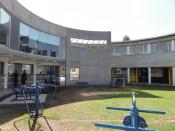The Wall Street Journal described the Internet in a Nov. 14, 1994, story as:
"... the chain of networks that is generally the easiest and cheapest way of business processes to communicate electronically with the outside world." [1]
This is however, a corporation's point of view. From a user's point of view, You can reach anywhere without paying extra for distance. You can search for and find an incredible variety of things and you can bring what you find back to your desktop, whether at work or at home. [1]
One puzzling aspect of the Internet is that no one owns it and it has no formal management organization. As a creation of the "Defense Department" (USA) for sharing research data, this lack of centralization was purposeful, to make it less vulnerable to wartime or terrorist attacks. To join the Internet, an existing network needs only to pay a small registration fee and agree to certain standards.
Each organization pays for its own networks. Regional Internet companies have been established to which member networks forward all transmissions. [5]
The Internet, in its broadest meaning, includes individuals, groups, organizations, grade schools, universities, commercial services, companies, governments, and free nets. "Being on the Internet" means having access to all of the main Internet systems such as FTP, Gopher, Telnet, e-mail, and the World Wide Web. There are many commercial Internet access providers who offer access to all of those systems. For the most part, communication over the Internet is in English, although many international servers offer dual language interfaces. [4]
The Internet is based on client/server technology. All the data, including e-mail messages, databases and Web sites, are stored on servers. Servers dedicated to the Internet or even to specific Internet functions are the heart of the information on...


